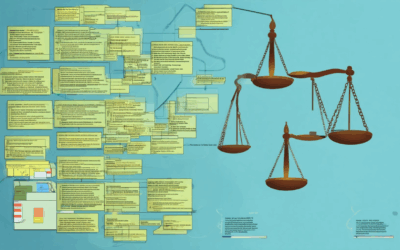In today’s fast-paced work environment, ineffective meetings can be a significant drain on productivity, leaving employees feeling frustrated and unproductive. Whether you’re managing a small team or leading a large organization, the ability to conduct effective meetings is crucial for success. But how do you ensure your meetings are not just time-consuming but truly productive? This article dives into the secrets of effective meeting strategies, offering actionable insights and practical tips to help you run meetings that drive results. From understanding the basics of effective meetings to mastering proven techniques, we’ll explore what makes a meeting successful and how to avoid common pitfalls. By the end of this guide, you’ll be equipped with the knowledge to transform your approach to meetings, ensuring every session is purposeful, efficient, and aligned with your business goals.
Key Takeaways
- Master the 40/20/40 Rule to optimize your meeting time, balancing preparation, execution, and follow-up for maximum efficiency.
- Prioritize Preparation: Spend 40% of your time pre-meeting to set clear objectives, gather materials, and review key points.
- Conduct Efficient Meetings: Keep the actual meeting duration at 20%, focusing on facilitated discussions and staying on track.
- Leverage the Golden Rule for respectful, inclusive, and productive meetings, ensuring all voices are heard and valued.
- Apply the 80/20 Rule to drive productivity by focusing 80% of outcomes on 20% of time, emphasizing key decisions and high-impact participants.
- Foster Constructive Conflict Resolution and maintain an outcome-oriented approach to achieve measurable progress.
- Enhance Decision-Making Efficiency by allocating more time to critical discussions and prioritizing agenda items aligned with organizational goals.
- Maximize Productivity by encouraging focused discussions and eliminating unproductive activities, ensuring efficient use of meeting time.
- Drive Success with Strategic Meeting Strategies: By integrating these rules, you can lead more effective, productive, and respected meetings, driving better outcomes and achieving your goals.

What Are the 4 Ps of Effective Meetings?
The 4 Ps of effective meetings are a widely recognized framework to ensure that your meetings are purposeful, productive, and result-oriented. These principles—Purpose, Product, People, and Process—are essential for anyone organizing or attending meetings. Let’s dive into each one:
Purpose
A clear and defined purpose is the foundation of an effective meeting. Before scheduling a meeting, ensure that everyone understands the reason behind it. The purpose should be specific, measurable, achievable, relevant, and time-bound (SMART). Without a clear purpose, meetings can become disorganized and unproductive. To maximize efficiency, align the meeting’s goals with the organization’s broader objectives.
Product
The product of a meeting refers to the outcomes or deliverables achieved during the session. This could be decisions made, problems solved, or ideas generated. To ensure the meeting yields a tangible product, prepare agendas that outline key discussion points and expected outcomes. Encourage participants to focus on actionable items rather than general discussions. Use tools like note-taking templates or project management software to track progress.
People
Effective meetings rely on the right people involved in the right roles. Start by inviting only those who are essential for achieving the meeting’s purpose. Clearly define each participant’s responsibilities, such as the chairperson, facilitator, and decision-makers. Create a comfortable environment where everyone feels heard, and encourage open communication. Conflict resolution skills are also important when disagreements arise.
Process
The process involves how the meeting is conducted and managed. A structured approach ensures that the meeting stays on track. Begin with a welcoming introduction, follow an agenda, and set time limits for each discussion item. Use techniques like brainstorming, mind mapping, or voting to facilitate decision-making. After the meeting, document the outcomes and next steps clearly. Regularly review and improve the process based on feedback.
By focusing on these four Ps—Purpose, Product, People, and Process—you can significantly enhance the effectiveness of your meetings. Whether you’re leading a team or participating in a collaborative session, understanding and applying these principles will help you achieve your goals while fostering better relationships and productivity.
Effective Meeting Strategies
To optimize your meetings and make them more productive, consider implementing the following strategies:
- Define Clear Objectives
Before scheduling a meeting, ensure everyone understands its purpose. Clearly outline the goals and expected outcomes to keep participants focused and engaged. - Prepare an Agenda
Share the agenda beforehand and stick to it. This helps manage time effectively and ensures that important topics are covered. Display the agenda visually, such as on a screen or printed handout, to facilitate smooth progress. - Limit Distractions
Create a distraction-free environment by turning off notifications and asking participants to refrain from multitasking during the meeting. - Engage Participants
Encourage active participation through open-ended questions, discussions, and brainstorming sessions. Use techniques like “round robin” to give everyone a chance to contribute. - Keep Discussions Focused
Avoid tangential topics. If something unrelated arises, note it and address it later or assign it to someone outside the meeting for further discussion. - Use Technology Wisely
Utilize tools like online polls or surveys to gather opinions efficiently. Record key points and decisions for future reference using digital tools. - Follow Up Post-Meeting
Document the meeting’s key decisions and next steps. Assign responsibilities and set deadlines to ensure accountability and follow-through. - Evaluate and Improve
After each meeting, conduct a brief review to identify what worked well and what could be improved. Adjust your strategy based on feedback to enhance future meetings.
By implementing these strategies, you can significantly improve the efficiency and effectiveness of your meetings, leading to better outcomes and stronger team collaboration.
Learn more about optimizing your meeting strategies .

The 5 Ps of Effective Meetings
Effective meetings require careful planning and execution to ensure productivity and alignment with organizational goals. Here’s a breakdown of the five key components:
- Purpose : Clearly define the meeting’s objective. Every gathering should have a specific reason for existence, whether it’s decision-making, brainstorming, or problem-solving.
- Participants : Invite only those necessary for achieving the objectives. Overloading the agenda with too many people can lead to inefficiency and confusion.
- Process : Establish a structured approach to the meeting. Stick to an agenda, set time limits for discussions, and assign someone to record key decisions and actions.
- Payoff : Measure the outcomes of the meeting. Ensure that decisions made lead to measurable progress toward the organization’s goals.
- Preparation : Spend time before the meeting preparing the agenda, gathering necessary materials, and setting expectations for attendees. This ensures the meeting starts on time and stays focused.
By focusing on these five Ps, you can significantly enhance the effectiveness of your meetings and ensure better outcomes for your team and organization. For more tips on optimizing your nonprofit operations, visit our NPO Expert resource hub.

What is the 40/20/40 Rule for Meetings?
The 40/20/40 rule is a popular time management strategy used to optimize meeting efficiency. Here’s a breakdown of how it works:
Preparation (40%)
Spending 40% of your time before the meeting ensures that you are well-prepared. This includes:
- Setting clear objectives for the meeting.
- Gathering all necessary materials and documents.
- Reviewing agendas and background information.
- Identifying key discussion points and potential outcomes.
During the Meeting (20%)
The actual meeting should last no more than 20% of your total allocated time. This phase focuses on:
- Facilitating productive discussions.
- Encouraging active participation from all attendees.
- Making decisions or assigning tasks as needed.
- Keeping the meeting on track and focused.
Post-Meeting Follow-Up (40%)
After the meeting ends, 40% of your time should be dedicated to:
- Documenting the key outcomes and action items.
- Assigning responsibilities and deadlines.
- Scheduling follow-up meetings if necessary.
- Tracking progress and holding individuals accountable.
This approach ensures that meetings are not only efficient but also lead to measurable results. By balancing preparation, execution, and follow-through, teams can maximize productivity and achieve their goals effectively.
For more tips on optimizing your meeting schedule, visit our main website and explore our comprehensive guides on project management and team collaboration.
The Golden Rule of a Meeting
The golden rule of a meeting is a fundamental principle that ensures respect, fairness, and productivity among participants. It emphasizes treating others as you would like to be treated, fostering a collaborative environment where everyone feels valued and heard.
Here are the key aspects of the golden rule applied to meetings:
- Respect and Courtesy : Treat every participant with dignity and respect. Listen actively, avoid interrupting, and allow others to express their thoughts fully.
- Equality and Inclusivity : Ensure that all voices are equally heard, regardless of role or position. Encourage participation from everyone, including quieter members.
- Preparation and Punctuality : Prepare adequately for the meeting to contribute effectively. Arrive early to allow others to organize their thoughts and ensure the meeting starts on time.
- Time Management : Stick to the agenda and keep discussions focused. Avoid sidetracking or dominating the conversation, allowing the group to stay on track and achieve its goals.
- Conflict Resolution : Address disagreements constructively and aim for consensus. Assume good intentions and work toward mutually beneficial solutions.
- Outcome-Oriented Approach : Focus on achieving agreed-upon objectives. Hold each other accountable and ensure that decisions lead to measurable progress.
By adhering to these principles, meetings become more efficient, productive, and respectful, ultimately leading to better outcomes for all participants.

The 80/20 Rule in Meetings
The 80/20 rule, often associated with the Pareto Principle, applies to meetings as well. This principle suggests that:
- 80% of meeting outcomes are determined by 20% of the meeting time.
- 20% of participants may account for 80% of the meeting’s productivity and decision-making.
- Most decisions in meetings are made during the first 20% of the time allocated for discussion.
Understanding and leveraging the 80/20 rule can significantly improve meeting efficiency. Here’s how:
Key Implications
- Focus on Key Decisions: Recognize that the majority of important decisions happen early in the meeting. Allocate more time upfront to critical discussions.
- Minimize Unproductive Time: Identify and eliminate activities that don’t contribute to decision-making or outcomes.
- Engage High-Impact Participants: Ensure that the 20% of individuals who drive results are fully engaged and prepared to contribute effectively.
Practical Applications
- Agenda Planning: Prioritize key agenda items that align with organizational goals. These should receive the majority of attention during the meeting.
- Time Management: Set clear deadlines and time limits for discussions to stay aligned with the 80/20 ratio.
- Encourage Efficiency: Encourage participants to focus on outcomes rather than exhaustive debating, fostering a productive environment.
By applying the 80/20 rule thoughtfully, organizations can reduce meeting durations while achieving greater productivity and decision-making efficiency. This approach is particularly beneficial for busy professionals and teams aiming to maximize impact in limited time frames.
Conclusion
The 80/20 rule in meetings emphasizes the importance of focusing on high-impact activities and efficient decision-making. By understanding and applying this principle, leaders can optimize meeting outcomes, driving better results with less time spent in discussions.





0 Comments